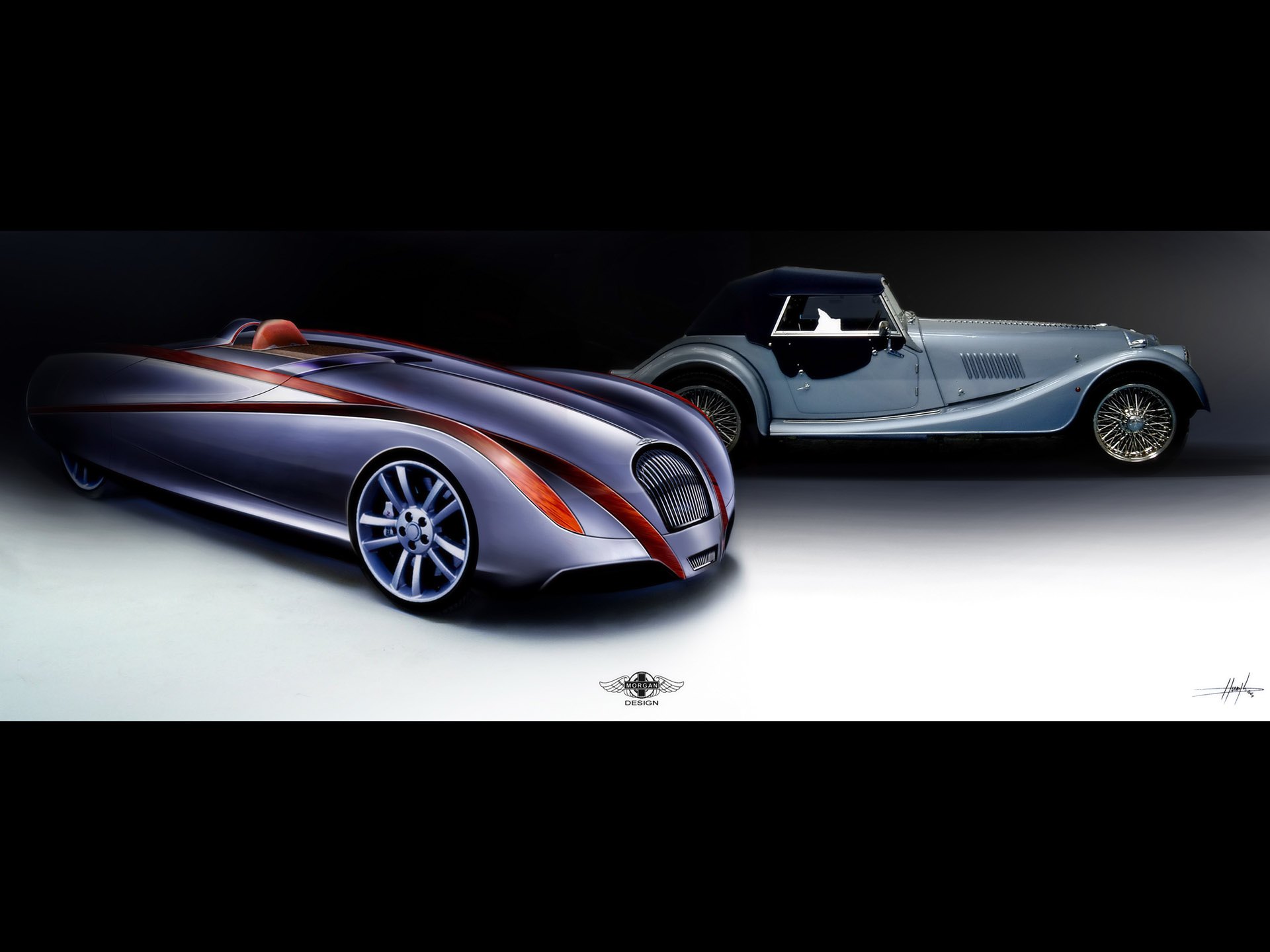2005 Morgan LIFECar Project
Technical Background
The car's fuel cell system operates by electrochemically combining on-board hydrogen with oxygen taken from the air outside. Although in most respects fuel cells are more like engines than batteries, to the extent that they generate energy from fuel in a tank rather than store energy, like batteries, they use electrodes (solid electrical conductors) with an electrolyte (an electrically conductive medium). When the hydrogen molecules come into contact with the negative electrodes, the molecules split into protons and electrons. The protons are then carried across the proton exchange membrane to the positive electrode of the fuel cell whilst the electrons travel around the external circuit as electricity. The molecules of the hydrogen and oxygen are combined chemically, with water as the only waste product. The only emission from the QinetiQ fuel cell will be water vapour. The electric power generated by the fuel cells powers the electric motors and turns the wheels of the vehicle.
Stephen Evans,
Professor of Life Cycle Engineering, Cranfield University:
“Cranfield University is developing computer simulation models for
the main vehicle components; such as the fuel cell, the hydrogen
storage system and the electrical machine. These models will allow
University engineers to predict the performance of the vehicle and
its environmental impact long before any physical components have
been manufactured and tested. These models will then be used to
develop the sophisticated control software and electronics, which
are necessary to integrate and manage the vehicle’s on-board
hydrogen and electrical power systems. Cranfield University will
also be acting as ‘project observer’ to ensure that the design
techniques used are made known to others.”
Dave Wardle, European Manager of Hydrogen Energy for BOC:
“The future of the hydrogen economy, and hydrogen-powered motoring
in particular, is central to both our society and our company. This
project has our total support, since if offers a real chance of
bringing forward a time in which hydrogen fuel is a realistic option
for motorists.”
Dr Malcolm McCulloch of Oxford University:
“It is obvious that in our transition to a sustainable society we
will have to adopt electric power for cars, and they will have to be
very efficient ones at that. To do this we will need to push the
envelope in the design of electric motors and their control gear,
which will be Oxford’s contribution to LIFECar.”
Hugo Spowers of OSCar Automotive:
“This project is the first fruit of a great deal of work on the
whole system design of fuel cell powered vehicles. We hope to be
able to demonstrate that the perceived barriers to the adoption of
hydrogen-fuelled motoring, the high costs of fuel cells and hydrogen
storage are, if not bogus, much less of a problem than is
conventionally thought.”
Ian Whiting of QinetiQ:
"LIFECar is about catching the first big wave in the energy
revolution, which is set to transform the motoring industry in the
same way that the computer industry was transformed by the personal
computer decades ago.”



